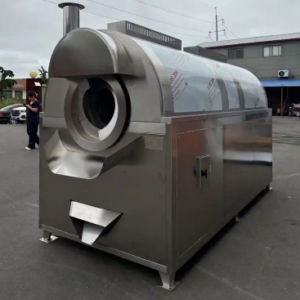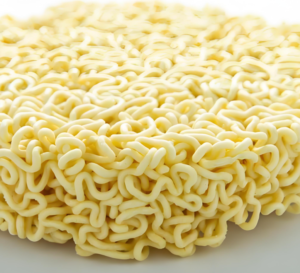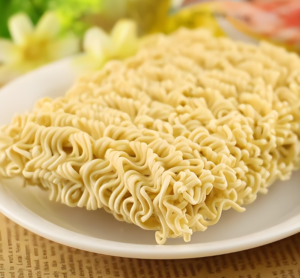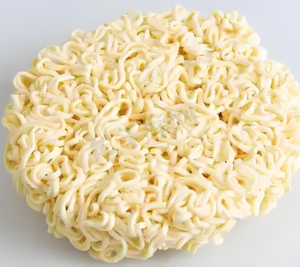<h1>The Production Process of Cheetos Machines: A Comprehensive Guide for Manufacturers</h1>Introduction to Cheetos and Their Manufacturing Machinery
Cheetos, the iconic cheese-flavored puffed snacks, have become a global favorite since their introduction in the 1940s. These extruded snacks are produced using specialized machinery designed for efficiency and high-volume output. For businesses in the food processing industry, understanding the production process of Cheetos machines is essential for optimizing operations, ensuring quality, and meeting international standards.
kurkure manufacturing
ToggleThis article delves into the step-by-step manufacturing process, highlighting key machinery, best practices, and innovations. Whether you’re a B2B supplier, exporter, or manufacturer, this guide will provide valuable insights to enhance your production capabilities and expand in the global market.
What Are Cheetos Machines and Why Are They Important?
Cheetos machines are advanced food processing equipment used to create extruded snacks like Cheetos through a process called extrusion. This technology combines ingredients under high pressure and heat to form the signature puffed texture. In the B2B sector, these machines are crucial for scaling production, reducing waste, and maintaining consistent product quality.
For foreign trade websites, Cheetos machines represent a lucrative export category. They enable manufacturers to produce snacks that appeal to diverse markets, from North America to Asia. Key features include automation, energy efficiency, and adaptability to various recipes, making them a smart investment for food businesses.
Key Components of a Cheetos Production Line
A typical Cheetos production line consists of several interconnected machines. These include mixers for ingredient blending, extruders for shaping, dryers for moisture control, and packaging systems for final sealing. Each component plays a vital role in ensuring the end product meets safety and taste standards.
Investing in high-quality components from reliable suppliers can significantly improve output. For instance, modern extruders use stainless steel for durability and ease of cleaning, which is essential for hygiene in food production.
Ingredient Preparation and Mixing
The process begins with ingredient preparation. Raw materials such as cornmeal, cheese powder, oils, and flavorings are sourced and measured precisely. This step ensures the correct balance of nutrients and flavors.
Mixing machines blend these ingredients into a uniform dough. Advanced models feature automated controls to maintain consistency, reducing human error and enhancing efficiency for large-scale operations.
Extrusion: The Heart of Cheetos Production
Extrusion is the core process where the mixed dough is forced through a die under high pressure and temperature. This transforms the mixture into the familiar puffed shapes of Cheetos. The extruder machine applies heat to cook the product while shaping it.
This step is highly customizable, allowing manufacturers to create various textures and sizes. For B2B exporters, machines with adjustable settings are popular, as they cater to different client preferences and regulatory requirements worldwide.
Drying and Cooling
After extrusion, the snacks enter the drying phase to remove excess moisture. Industrial dryers use controlled heat and airflow to achieve the perfect crispiness without overcooking the product.
Cooling follows to stabilize the snacks and prevent breakage. Efficient cooling systems integrated into the production line help maintain product integrity, which is critical for packaging and storage.
Seasoning and Flavor Application
Once dried, Cheetos are seasoned for their distinctive taste. This involves tumbling the snacks in a drum with cheese powder, salt, and other flavorings. Seasoning machines ensure even coating for a consistent consumer experience.
In B2B contexts, customizable seasoning options allow manufacturers to adapt to regional tastes, such as spicy variants for Asian markets or milder flavors for Europe. This flexibility boosts export potential and market competitiveness.
Quality Control and Packaging
Quality control is integrated throughout the process. Sensors and inspection systems check for defects, moisture levels, and flavor accuracy. This minimizes waste and ensures compliance with food safety standards like ISO or HACCP.
Finally, packaging machines seal the snacks in bags or containers. Automated systems use nitrogen flushing to extend shelf life, making the product ideal for international shipping and retail distribution.
Innovations in Cheetos Machine Technology
The food processing industry is evolving rapidly, with innovations enhancing Cheetos machine efficiency. Modern machines incorporate IoT for real-time monitoring, allowing operators to track production remotely and predict maintenance needs.
Sustainability is another focus. New models use energy-efficient motors and recyclable materials, appealing to eco-conscious buyers. For B2B traders, these advancements mean offering cutting-edge solutions that reduce costs and environmental impact.
Automation has also reduced labor requirements. Robotic arms handle tasks like loading ingredients or packaging, improving speed and safety in high-volume factories.
Challenges in Cheetos Machine Production and How to Overcome Them
Producing Cheetos machines involves challenges like maintaining hygiene standards and managing high energy consumption. Contamination risks are high in food processing, so manufacturers must use materials that resist bacteria and are easy to sanitize.
Energy costs can be mitigated by investing in efficient models. Additionally, supply chain disruptions, common in global trade, can be addressed through diversified sourcing and strong partnerships with suppliers.
For exporters, navigating international regulations is key. Ensuring machines comply with FDA or EU standards helps avoid delays and build trust with clients.
The Global Market for Cheetos Machines
The demand for Cheetos machines is growing worldwide, driven by the expanding snack food industry. Regions like Asia-Pacific and Latin America are seeing increased adoption due to rising consumer demand for processed foods.
B2B opportunities abound in exporting these machines. Companies can leverage online platforms to showcase products, highlighting features like customizability and after-sales support to attract international buyers.
Frequently Asked Questions
Below, we address common queries about Cheetos machine production to help businesses make informed decisions.
What is the typical cost of a Cheetos production line? The cost varies based on capacity and features, ranging from $50,000 for small-scale units to over $500,000 for industrial setups. Factors like automation and energy efficiency influence pricing.
How long does it take to set up a Cheetos machine? Installation can take 1-2 weeks for basic models, but complex lines may require up to a month, including training and testing.
Are Cheetos machines easy to maintain? Yes, modern designs include user-friendly interfaces and modular parts for quick repairs. Regular maintenance schedules can extend machine life to 10-15 years.
What raw materials are needed for Cheetos production? Primary ingredients include cornmeal, vegetable oils, cheese powder, and seasonings. Sourcing from certified suppliers ensures quality and compliance.
Can Cheetos machines produce other snacks? Absolutely. They are versatile and can make a variety of extruded products, such as puffs, curls, and rings, by adjusting dies and settings.
Conclusion: Enhancing Your Business with Cheetos Machine Knowledge
In summary, mastering the production process of Cheetos machines offers significant advantages for B2B manufacturers and exporters. From ingredient preparation to innovative packaging, each step contributes to creating high-quality snacks that meet global demands. By adopting advanced technologies and focusing on quality control, businesses can improve efficiency, reduce costs, and tap into new markets. Whether you’re starting out or expanding, this knowledge empowers you to thrive in the competitive food processing industry.








